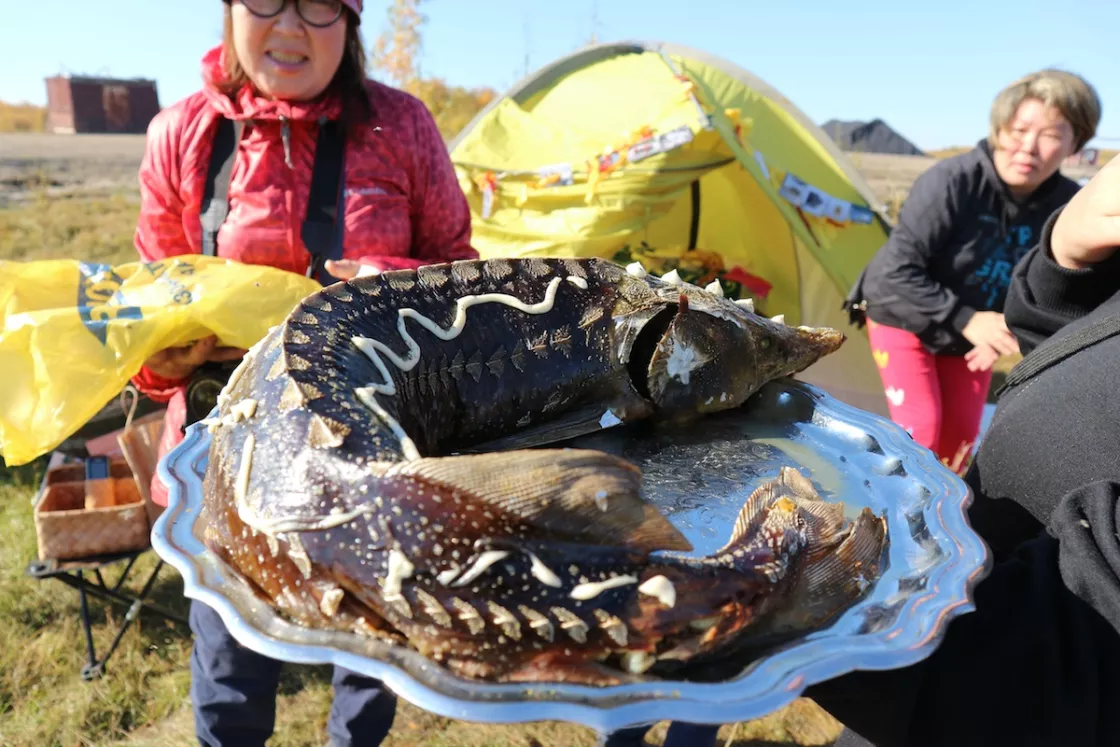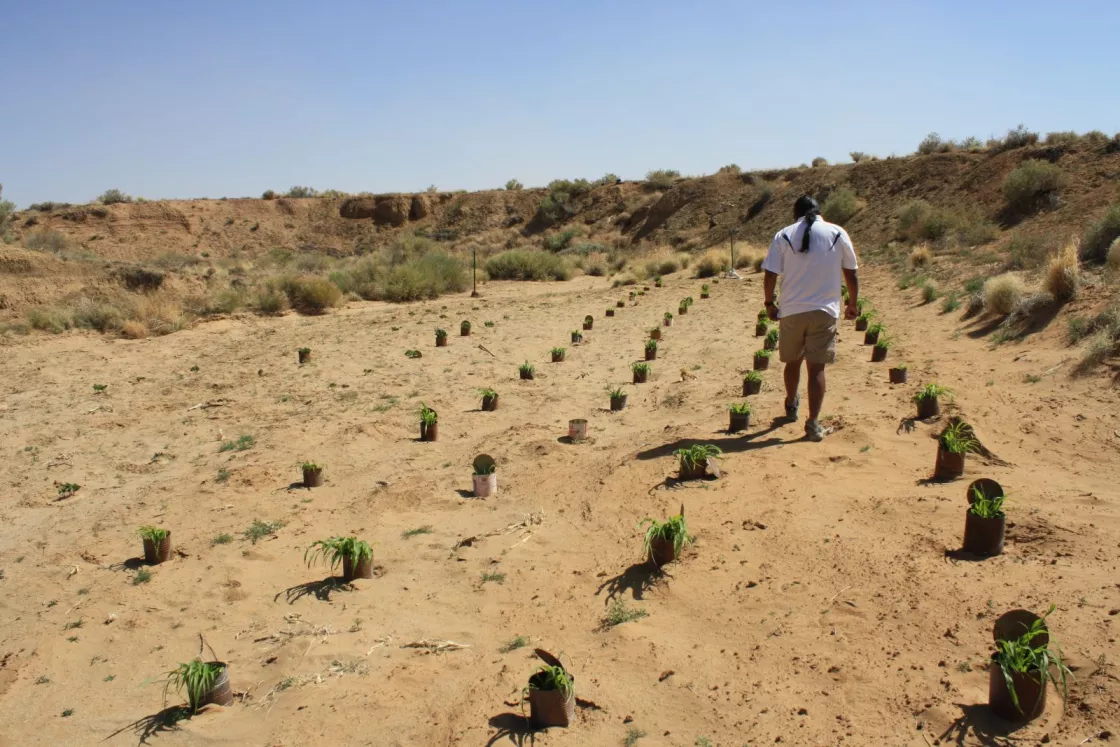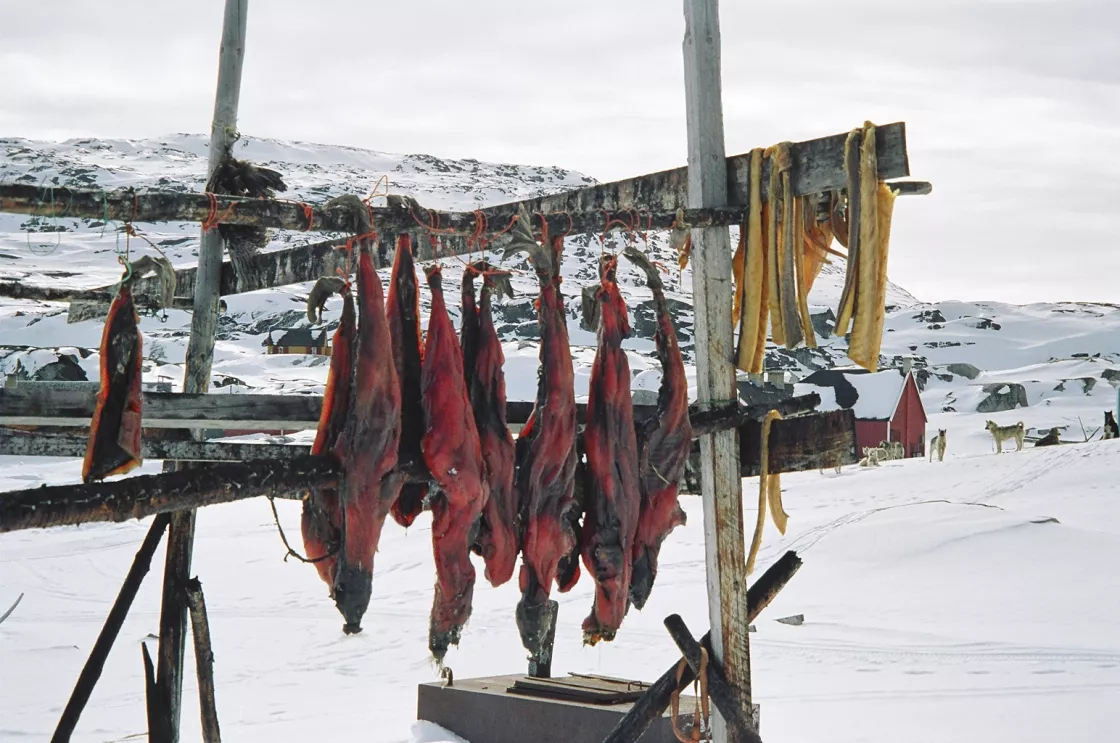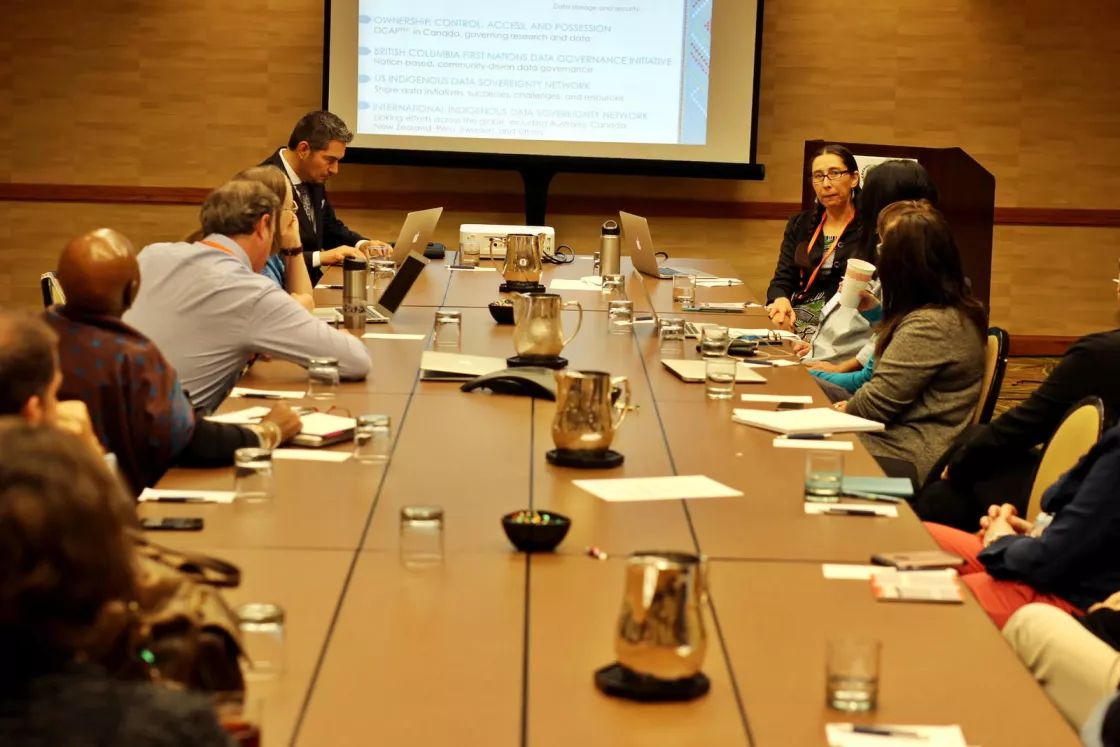By Agnieszka Gautier
What do the Indigenous communities in the US Southwest and Arctic have in common? Probably not much at first glance, but for NSIDC research scientist Colleen Strawhacker, who has worked closely with Indigenous communities in both regions, an opportunity for discovery is timely in a changing climate.
In September 2017, Strawhacker and her team received a 4-year National Science Foundation (NSF) grant to bring Indigenous people and scientists from both regions together. As Strawhacker said, “Having the opportunity to speak with someone who experiences the world in a completely different way, may spur incredible innovation for dealing with issues in the US Southwest and the Arctic.” Specifically, the NSF grant focuses on ensuring food and data sovereignty in both the Arctic and US Southwest, regions known for their harsh environments.
Not so polar opposites
“You’re kind of on the edge of something,” Strawhacker said about her archeological comparative research in both regions. In Greenland, if temperatures drop slightly, farming stops. In the US Southwest, there is just enough rain to support crops in places. “If you get below that mean, crops won’t succeed that year. You don’t have a lot of wiggle room,” she said. “So it’s fascinating to see the ingenious strategies that people come up with to procure food in these environments.”
Data then can help buffer that vulnerability and enable better decision making on the ground.
Having Indigenous peoples drive the information—how their knowledge is shared and how scientific data can be made accessible to them—is part of data sovereignty. Historically, too often Indigenous viewpoints were disregarded. Allowing for inclusivity and shared ideas drives this project. So the team will evaluate what scientific knowledge Indigenous partners would need and what Indigenous Knowledge (IK) would be relevant; and then, the team will come up with tools to make that information available. “But having the Indigenous partners drive that is key,” Strawhacker added.
Strawhacker started at NSIDC while working on The Exchange for Local Observations and Knowledge in the Arctic (ELOKA) project. ELOKA has worked closely with Indigenous communities, and is now moving toward Indigenous data sovereignty. ELOKA generates products like websites and digital maps, but Indigenous partners own and operate them. In that sense, this grant is a spin-off from ELOKA—with a wider geographic reach.
Trifecta
Strawhacker saw three themes linking the US Southwest and the Arctic: fire, water, and dust. “Both regions are dealing with these three issues right now,” she said. Fire in the Southwest has been well studied, but is a newer problem in the Arctic. A 2013 study found that across the entire Arctic, forests are burning at a rate unseen in at least 10,000 years.
Water in the Arctic comes in shifting sea ice patterns and permafrost thaw, both of which have significant implications on subsistent species. Climate change adds to already-existing challenges. As the Arctic warms, at twice the rate as the rest of the globe, sea ice becomes more unpredictable, permafrost warps foundations, and encroaching coastlines have already forced communities like Shishmaref, Alaska to abandon their village. For the dry US Southwest, low rainfall is the norm.
Dust storms are also common across the arid Southwest, but surprisingly are increasingly present in the Arctic. “This is something relatively new happening with the changing environment, so it is ripe to be studied,” Strawhacker said. In the Arctic, snow’s glow is fading. A combination of soot, dust, and microbes are darkening snow and increasing melt. Forest fires increase soot, earlier springtime snow melt kicks up dust, with the wind transporting both into the Arctic.
Thus, Indigenous communities face abrupt environmental changes that may further impact social stability. For instance, a thinning sea ice provokes Arctic oil and gas development, which may trigger potential spills, displaced marine life, and other unforeseen repercussions—how will these affect Indigenous communities?
Linking solutions
Through the grant, representatives of these two regions can meet. Their differences are an asset in Strawhacker’s mind. “Ideally, you’re putting together interesting people to come up with cool ideas and spin-off projects.” For instance, the community-based monitoring maps used in Arctic communities could inspire similar products from the Southwest.
“We’re going to have scientists in the room but it’s going to be led by our Indigenous partners, from two different regions of the world,” Strawhacker said. “I think it’s really cool to have Indigenous-driven projects at NSIDC.”
In the end, Strawhacker hopes to create a substantive report of similarities and differences between the regions and what Indigenous communities are facing, both environmentally and socially around food security and data sovereignty. She adds, “I’m really excited about this project.” As the project moves forward, Strawhacker believes its goals will evolve, and she doesn’t want to dictate what those should be. But solutions for the environmental challenges Indigenous communities face, whether from fire, water, or dust, remain the focus of round table discussions.
The first meeting will be held in early 2018 at the Gila River Indian Community in the US Southwest, followed by a fall meeting in Finland in partnership with SnowChange.



